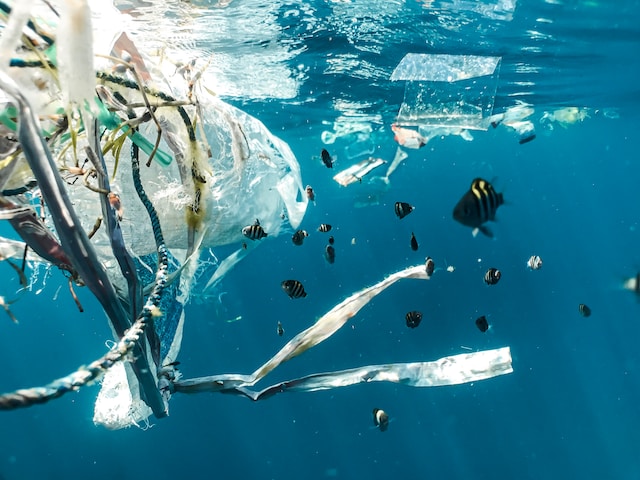A diverse array of coastal species have adapted to live, survive and thrive on the Great Pacific Garbage Patch, says a new paper.
The North Pacific Gyre (NPG) or North Pacific Subtropical Gyre (NPSG) is one of the five major oceanic gyres and covers most of the northern Pacific Ocean. Not only is it the largest ecosystem on Earth but it is the site of a vast collection of marine debris known as Great Pacific Garbage Patch, between California and Hawaii.
According to the researchers of a new study, species that are usually found along coastlines and not the open ocean, have made this floating trash in the Pacific Ocean their homes. This included invertebrates such as crabs and anemones, not only living but also reproducing on the trash.
“It appears that coastal species persist now in the open ocean as a substantial component of a neopelagic community sustained by the vast and expanding sea of plastic debris.”
The study entailed collecting 105 different pieces of floating plastic marine debris in the North Pacific Subtropical Gyre in 2018 and 2019, and identified 484 invertebrates on the70% of the items. 80% of the species are usually found along coastal habitats and not in the open ocean.
According to the study, “Analysis of rafting plastic debris in the eastern North Pacific Subtropical Gyre revealed 37 coastal invertebrate taxa, largely of Western Pacific origin, exceeding pelagic taxa richness by threefold. Coastal taxa, including diverse taxonomic groups and life history traits, occurred on 70.5% of debris items.”
The North Pacific Subtropical Gyre has around 79,000 tons of trash and is “identified as the most heavily plastic-polluted ocean gyre on the globe,” according to the study.
These thriving communities have been possible because plastic takes an exceptionally long time to erode.
“Our results demonstrate that the oceanic environment and floating plastic habitat are clearly hospitable to coastal species. Coastal species with an array of life history traits can survive, reproduce, and have complex population and community structures in the open ocean. The plastisphere may now provide extraordinary new opportunities for coastal species to expand populations into the open ocean,” said the authors.
“This discovery suggests that past biogeographical boundaries among marine ecosystems — established for millions of years — are rapidly changing due to floating plastic pollution accumulating in the subtropical gyres,” said lead author Linsey Haram, research associate at Smithsonian Environmental Research Center (SERC).
Although scientists had previously been aware from other studies that some coastal species colonized marine plastic debris, it was not clear till now that establised coastal communities could persist in the open ocean, all due to the impact of human activities. This means that this debris could transport these species to fragile ecosystems, where they could potentially establish as invasive species.
“The Hawaiian Islands are neighbored in the northeast by the North Pacific garbage patch,” said Nikolai Maximenko, co-author and senior researcher at the UH Mānoa School of Ocean and Earth Science and Technology. “Debris that breaks off from this patch constitutes the majority of debris arriving on Hawaiian beaches and reefs. In the past, the fragile marine ecosystems of the islands were protected by the very long distances from coastal communities of Asia and North America. The presence of coastal species persisting in the North Pacific Subtropical Gyre near Hawai‘i is a game changer that indicates that the islands are at an increased risk of colonization by invasive species.”
“Our study underscores the large knowledge gap and still limited understanding of rapidly changing open ocean ecosystems,” said co-author Gregory Ruiz, senior scientist at SERC. “This highlights the need for dramatic enhancement of the high-seas observing systems, including biological, physical and marine debris measurements.”

